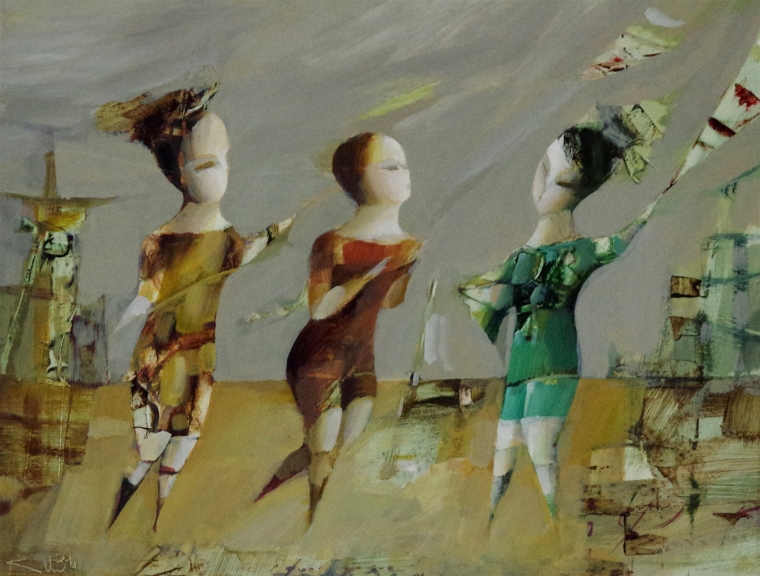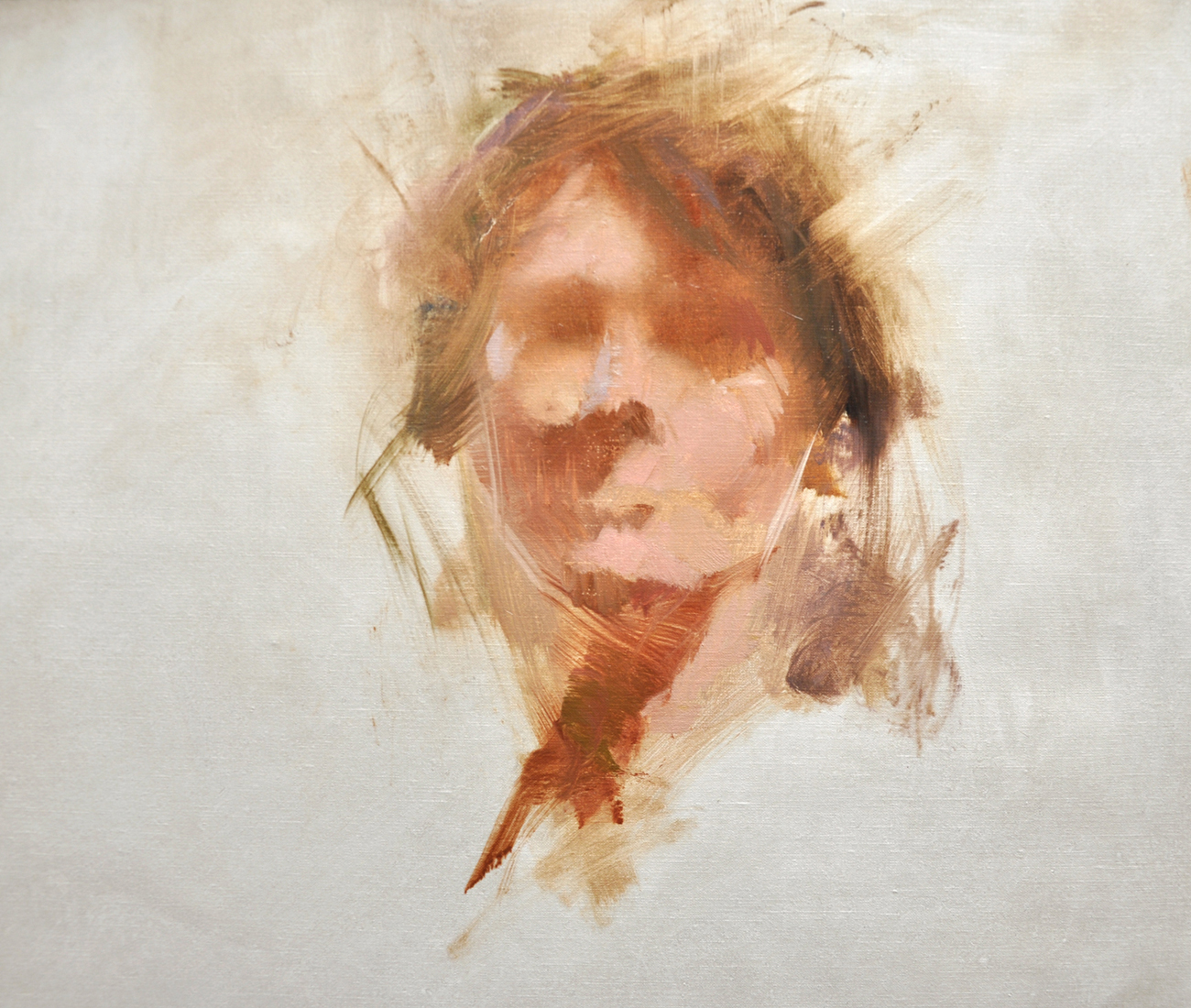Introducing the Tricks Behind Expressive Figurative Oil Painting Styles
Introducing the Tricks Behind Expressive Figurative Oil Painting Styles
Blog Article
The Function of Feeling and Expression in Metaphorical Oil Paint: An Extensive Analysis of Topic and Composition
The interplay of feeling and expression in metaphorical oil paint serves as an important lens through which one can take a look at the elaborate partnership between subject matter and structure. Artists harness various techniques, from color selection to brushstroke dynamics, to grow psychological resonance within their works.
Comprehending Emotion in Art
Feeling in art functions as a powerful channel for expression, allowing artists to share complex sensations through their job. In metaphorical oil painting, this emotional deepness is typically portrayed via the depiction of the human figure, catching the nuances of human experience. The selection of subject matter, shade palette, and brushwork all contribute to the emotional vibration of an item.
Artists frequently bring into play individual experiences, societal issues, or universal styles to stimulate feelings in the audience. As an example, a portrait may show susceptability, while a vibrant figure in activity can symbolize freedom or turmoil. These emotional threads connect the customer to the art work, cultivating a dialogue that goes beyond the visual medium.
In addition, the interaction in between light and darkness can intensify psychological strength, leading the visitor's gaze and drawing attention to particular aspects within the composition. Using structure in oil painting better includes layers of intricacy, welcoming a responsive response that improves the psychological experience. On the whole, comprehending feeling in art is crucial for appreciating the subtleties that identify metaphorical oil painting, as it transforms mere depiction right into an extensive exploration of the human problem.
Crucial Element of Composition
In the world of metaphorical oil paint, the composition offers as the underlying framework that arranges visual elements and boosts the psychological story. Crucial parts of make-up consist of equilibrium, contrast, prime focus, and rhythm, each adding to the overall effect of the artwork.
Equilibrium describes the circulation of visual weight within the painting, which can be attained via balanced or asymmetrical arrangements. A well-balanced make-up gives security, allowing the viewer to involve with the piece sympathetically - figurative oil painting. Contrast, on the various other hand, includes juxtaposing various aspects, such as light and dark or warm and trendy colors, to direct the visitor's eye and evoke psychological reactions
The focal point is critical, as it directs attention to the most considerable part of the painting, commonly highlighting the psychological core of the story. By skillfully incorporating these vital elements, artists can craft compelling and psychologically resonant figurative oil paints that mesmerize and involve their target market.
Subject and Its Impact
Subject matter plays a critical function in figurative oil painting, as it not just works as the structure for the story but also shapes the audience's analysis and psychological involvement with the art work. The selection of topic-- be it a singular number, a team dynamic, or a thematic depiction-- directly influences the emotional environment communicated to the audience.

As an example, pictures typically evoke individual connections, disclosing the intricacies of human expression and personality, while scenes portraying public activities can produce a sense of belonging or fond memories. The historic and social context of the subject matter improves the customer's understanding, prompting deeper reflections on societal standards, worths, and the human condition.
Various subjects also produce differing levels of involvement; a remarkable problem depicted via numbers in stress may generate sensations of anxiety or compassion, while peaceful landscapes can invoke peace and contemplation. Inevitably, the effect of subject in figurative oil painting is profound, as it functions as a conduit for psychological vibration, guiding the viewer's reaction and analysis, and fostering a link between the art work and the onlooker. This interaction is vital for the effective communication of the artist's intent.
Methods for Stimulating Feelings
The efficiency of metaphorical oil paint in sharing feelings is substantially affected by the methods used by the musician. Among the most essential methods is using color concept, where the tactical selection of shades can evoke specific emotional reactions. Warm colors, such as oranges and reds, frequently elicit feelings of passion or aggression, while cooler tones like blues and environment-friendlies have a tendency to evoke calmness or sadness.
An additional crucial method is the control of light and shadow, understood as chiaroscuro. This method enhances the three-dimensionality of numbers, developing significant contrasts that can magnify emotional deepness. The positioning of light can assist visitors' emotions, highlighting specific components of the structure.
Brushwork additionally plays a vital function; loose, expressive strokes can share power and spontaneity, whereas smoother techniques may suggest peace or accuracy. Additionally, the arrangement of subjects within the make-up can influence emotional influence. Close closeness can recommend intimacy, while range may indicate seclusion.
Eventually, the combination of these strategies allows musicians to craft stories that reverberate with the audience, changing a mere aesthetic experience right into an evocative psychological journey. - figurative oil painting

Study of Remarkable Works
Taking a look at notable jobs of metaphorical oil painting reveals exactly how various methods are used to stimulate powerful feelings. One exemplary case is Edvard Munch's "The Scream," where the altered number and swirling background share existential fear. Munch's use shade-- dazzling oranges and deep blues-- magnifies the emotional influence, showcasing exactly how scheme choices can shape important link audience experience.
One more substantial job is Pablo Picasso's "Les Demoiselles d'Avignon." Below, bold brushstrokes and fragmented check here types show a tumultuous emotional landscape, challenging typical representations of the women number. Picasso's cutting-edge make-up not just catches the customer's interest however likewise invites consideration on styles of identity and sexuality.
Additionally, Frida Kahlo's "The Two Fridas" offers a poignant expedition of duality and self-identity. The contrasting numbers, connected by a shared heart, exhibit Kahlo's psychological deepness and personal narrative. figurative oil painting. Her thorough focus to information and symbolic components serve to engage visitors on a natural level
These study underscore the extensive connection in between feeling and structure in figurative oil paint, exposing just how musicians harness technique to connect complicated feelings and narratives that resonate throughout time and culture.

Final Thought
In final thought, the interaction of emotion and expression in metaphorical oil painting dramatically boosts the audience's experience and analysis of the artwork. With a mindful choice of subject issue and compositional strategies, musicians communicate profound narratives that resonate on both individual and universal levels. The application of shade theory, chiaroscuro, and brushwork additional amplifies emotional deepness, transforming each canvas right into a powerful reflection of useful link the intricacies of the human experience.
In metaphorical oil paint, this psychological depth is commonly represented through the depiction of the human figure, capturing the subtleties of human experience.In addition, the interplay between light and shadow can intensify psychological intensity, guiding the audience's look and drawing interest to specific aspects within the composition. The use of structure in oil paint further adds layers of complexity, inviting a responsive action that boosts the psychological experience.The focal factor is crucial, as it directs interest to the most considerable component of the paint, usually highlighting the emotional core of the story. Ultimately, the impact of subject matter in metaphorical oil paint is profound, as it offers as an avenue for psychological vibration, leading the visitor's reaction and analysis, and cultivating a link in between the artwork and the onlooker.
Report this page